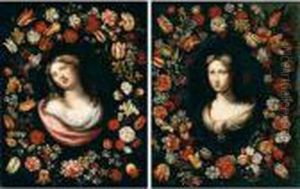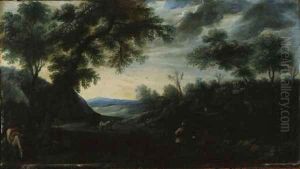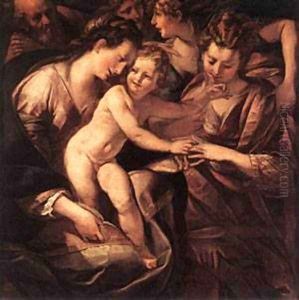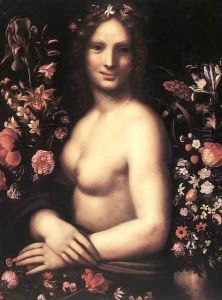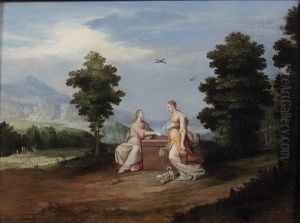Carlo Antonio Procaccini Paintings
Carlo Antonio Procaccini was an Italian painter and one of the notable members of the Procaccini family of artists, which played a significant role in the Lombard and Genoese schools of the late 16th and early 17th centuries. Born in Bologna in 1571, he was part of a dynastic lineage of artists; his father, Ercole Procaccini the Elder, was a painter and founder of the family workshop, and his brothers Camillo and Giulio Cesare were also accomplished painters. The family moved to Milan, where they were influential in introducing the late Mannerist style, characterized by elongated figures and complex compositions, to the region.
Carlo Antonio's work, however, began to reflect the early Baroque's emphasis on movement and emotion, demonstrating a transition from the Mannerist style of his family's tradition. His oeuvre includes religious subjects, landscapes, and still lifes, showcasing a versatility and adaptability to the evolving artistic tastes of his time. Notably, his landscapes and still lifes are considered precursors to the naturalistic styles that would dominate European art later in the 17th century.
Throughout his career, Procaccini received commissions from prominent churches and patrons in Milan and Genoa, contributing significantly to the artistic landscape of Northern Italy during the Counter-Reformation. His works are characterized by their dynamic compositions, vibrant color palette, and the emotional intensity of the figures depicted.
Carlo Antonio Procaccini passed away in Milan in 1630, leaving behind a legacy that had a lasting influence on the development of Baroque art in Italy. His ability to blend the Mannerist traditions with the emerging Baroque sensibilities made his work a bridge between two pivotal eras in art history.



